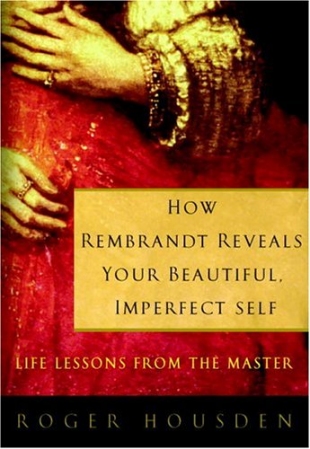"Rembrandt had a calling he was bound to follow. We might think he would give anything to have that kind of certainty, along with his genius to back it up. But such a life is hardly a free ride. It demands more than most of us could even begin to stand. It's a heavy responsibility and carries its own weight of sorrows. Which is why, perhaps, it is just as well that such lives are meted out sparely.
"The greatest demand of a calling like Rembrandt's is to give yourself utterly. As Rembrandt's youthful ambitions for fame and success foundered on the rocks of insolvency; as his greatest supports, first Saskia, then Hendrickje, gave up the ghost; he was left with just one thing, and that was his work. In the last dozen years of his life he created some of the greatest masterpieces of Western art, all the while divesting himself more and more of the proud demeanor of his earlier years and showing us in his self-portraits an openness to, a profound acceptance of, his true estate.
"To follow your own vision regardless of the disapproval of others or their lack of interest makes for a lonely road, yet it was a road Rembrandt felt obliged to take. Along the way, art was his primary solace. In 1657, around the time of his bankruptcy, he painted David Harping Before Saul, in which the great king is being comforted by David's sweet playing of the harp. The curves of the harp, the folds of the curtain, seem to wash the music in waves over Saul, who is so moved that he is wiping a tear away.
"No theatrical, baroque gesture here. Saul's tears, real and deeply felt, are the quintessence of the emotive power that rises from the whole painting. Glorious color, deep reds and golds, add texture and depth to the feeling tone. Rembrandt knew, at this time in his life, the redemptive, healing power of art, not just for those who came to his studio still to admire his work, but for his own stricken and grieving soul.
"In the earlier Rembrandt, you can sense the struggles of a brilliant man making his way in the world with the use of his God-given gift. In the later work, it's as if Rembrandt the man has died into his art. His work is who he is. It is not separate from his essence; it lays his essence bare. When this happens, the ego is subsumed into something bigger than the individual, into the more universal dimension of great art: art that will speak down through the centuries, not just of the artist, Rembrandt, but of essential human qualities that all of us can sense in ourselves. In our individuality, we differentiate ourselves from one another; in the soul, we see our common humanity. Stand in front of a late Rembrandt, and you are likely to see multiple reflections of yourself."
